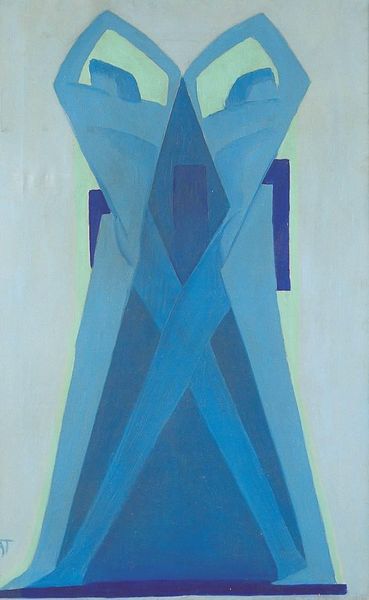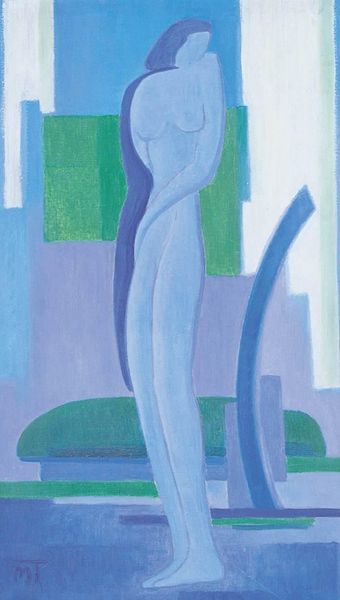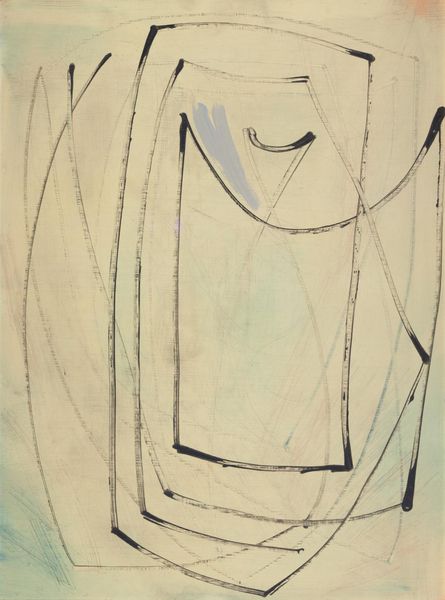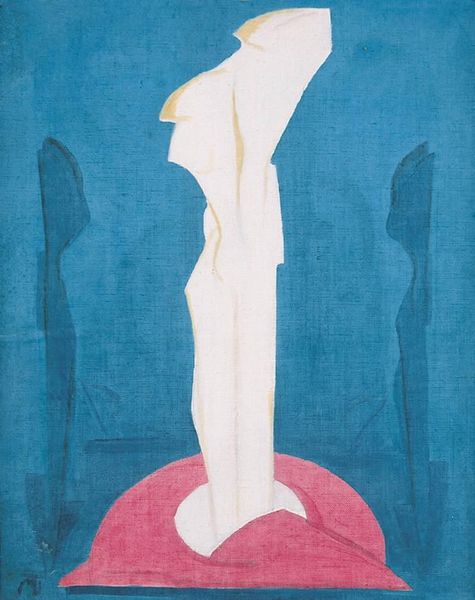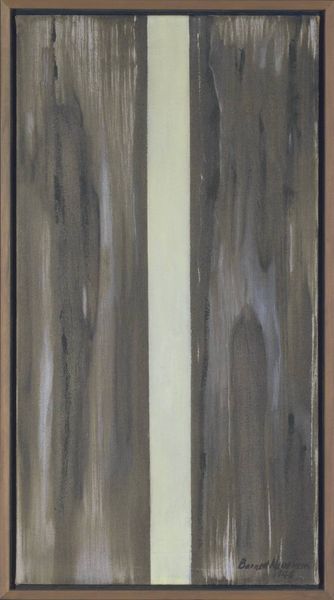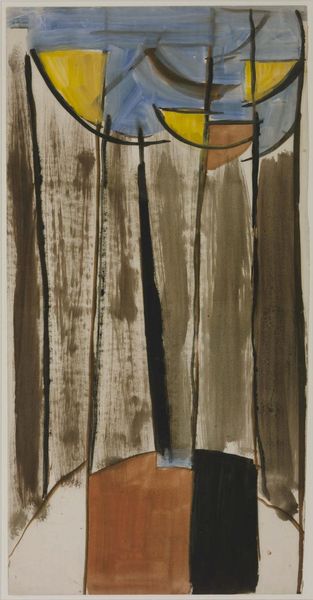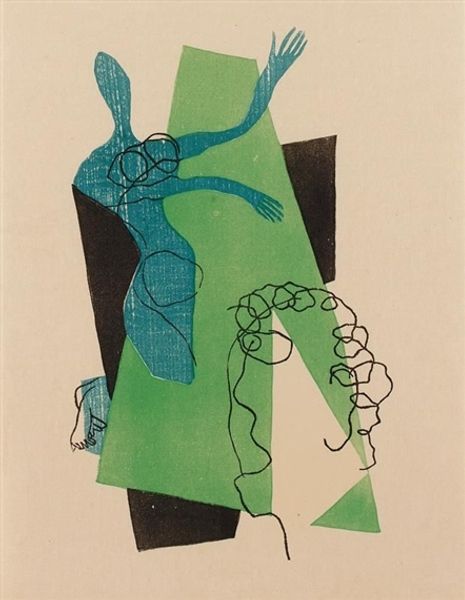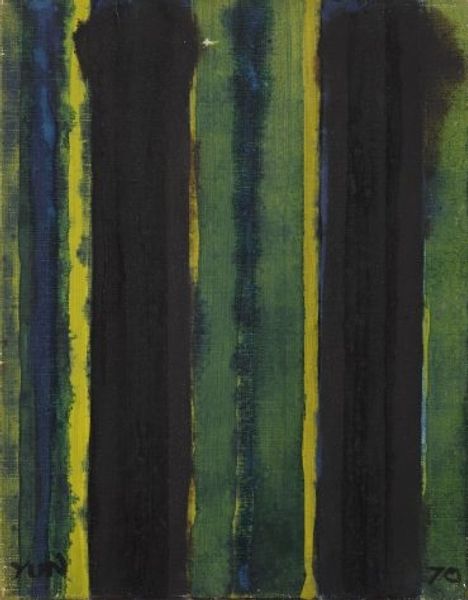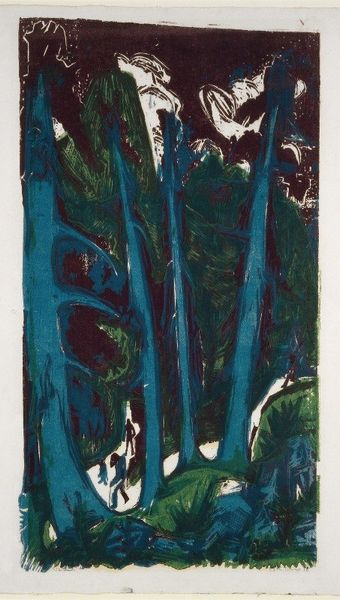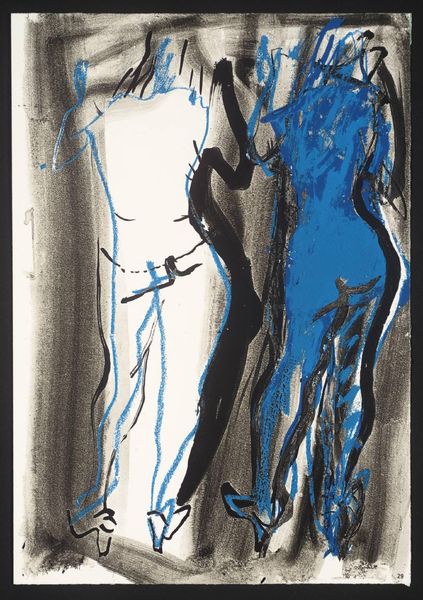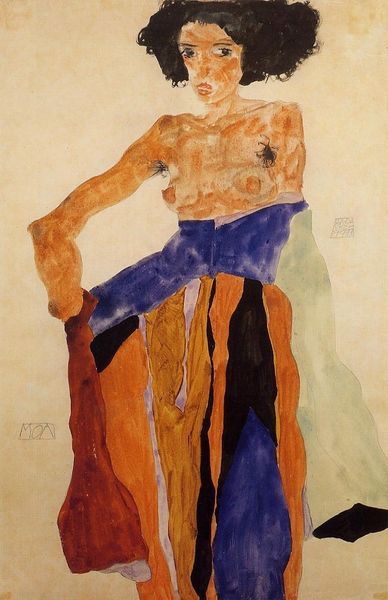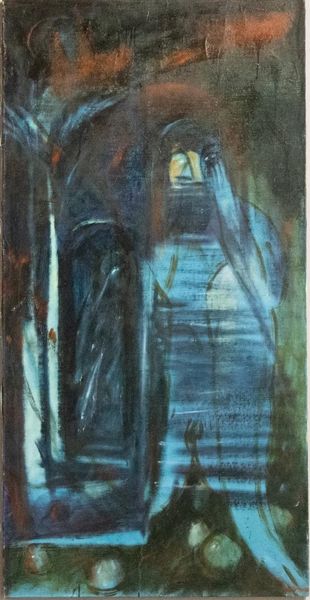
painting, oil-paint
#
portrait
#
abstract painting
#
painting
#
oil-paint
#
constructivism
#
figuration
#
oil painting
#
neo expressionist
#
expressionism
#
abstraction
#
portrait art
Copyright: Janos Mattis-Teutsch,Fair Use
Curator: Let’s consider this painting from 1927, titled “Blue Figure” by János Mattis-Teutsch. Editor: My immediate impression is a sense of towering monumentality. Despite the abstract nature of the piece, it evokes strength, and almost an unsettling level of stoicism with its geometrical shapes and stark blues and blacks. Curator: Right. Mattis-Teutsch, with his background in expressionism and engagement with constructivist principles, was really striving to develop his own visual language. Consider the moment it was painted: the interwar period saw artists trying to find ways to represent a rapidly changing, often traumatized world. Editor: And that context feels vital here. Blue can often convey calmness or peace, but the shade here, combined with those severe lines, feels more like a cold, imposed stability. One could read the figure as trapped, constrained by both the vertical black bar and perhaps, metaphorically, by the rigid societal structures that were taking hold. The hints of figuration speak to how society's pressures work against any individuated identity. Curator: Absolutely. His work at this time sits within a larger trend, if you will, of avant-garde artists grappling with the role of the individual in increasingly industrialized and politically polarized societies. Though he was involved with Der Sturm, the November Group, and the Contimporanul group, we see a real distillation of styles here. And his exploration of abstraction wasn’t just formal; it was a response to the social climate. It shows how public role of the artwork changes. Editor: I am drawn to the tension between the abstract and the representational, where those fractured figurative elements hint at something recognizable yet ultimately undefinable. This really encourages a questioning of established norms, maybe asking the viewer to confront uncomfortable realities. In what ways might this speak to the silencing or erasure of particular identities during this period? Who gets to decide what kind of images circulate within art and larger cultural settings? Curator: Indeed. It makes you consider the cultural anxieties inherent to the rise of fascism in Europe. He does something that really provokes viewers to analyze. Editor: Right, and to think critically not just about the art but the power structures that shape its interpretation and consumption. Curator: It gives me so much more to think about when it comes to Mattis-Teutsch's development within those complicated artistic and sociopolitical landscapes. Editor: For me, this artwork reminds me of art's responsibility to be self-reflective about its role within social frameworks, and to give expression to diverse experience.
Comments
No comments
Be the first to comment and join the conversation on the ultimate creative platform.
